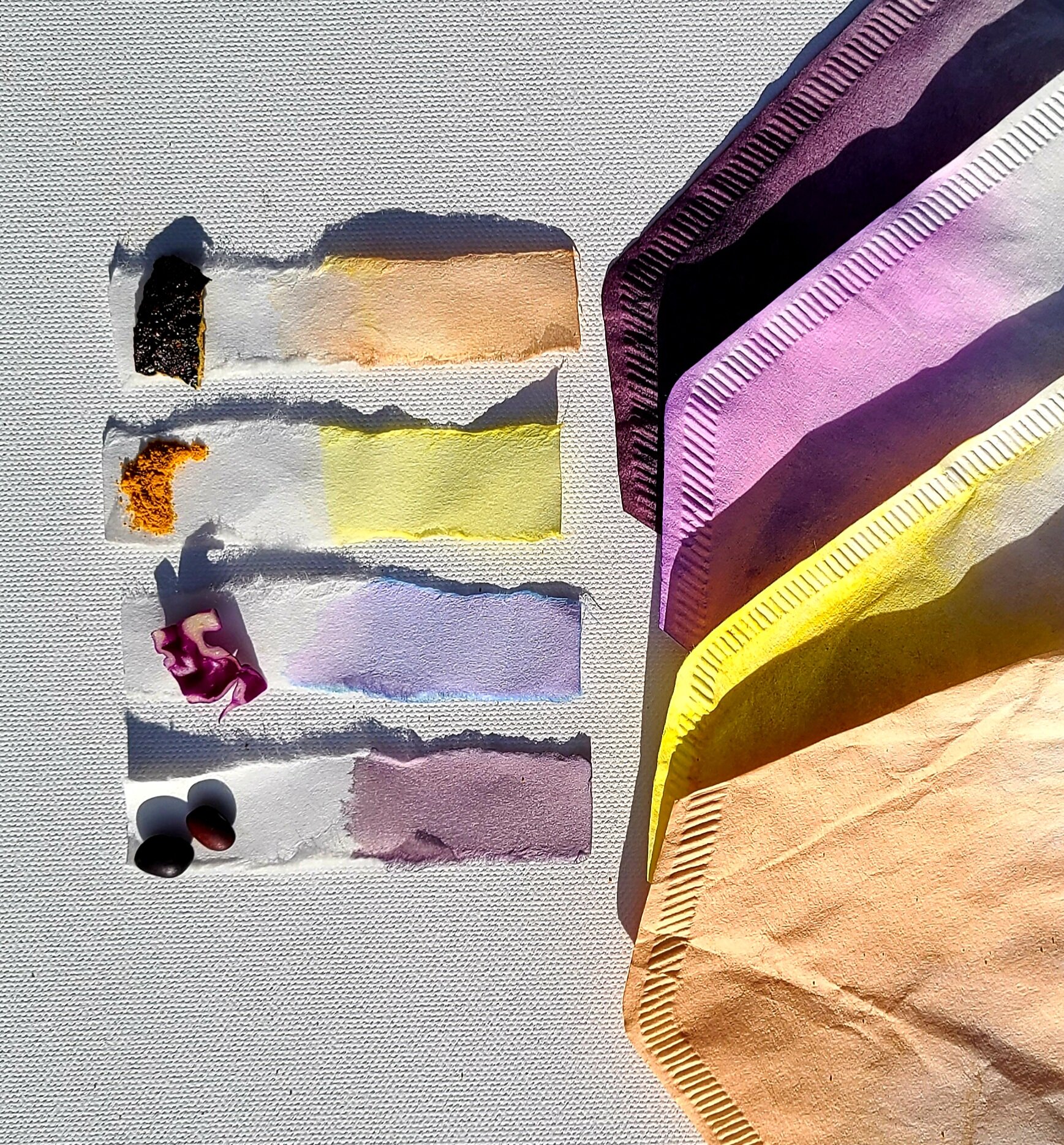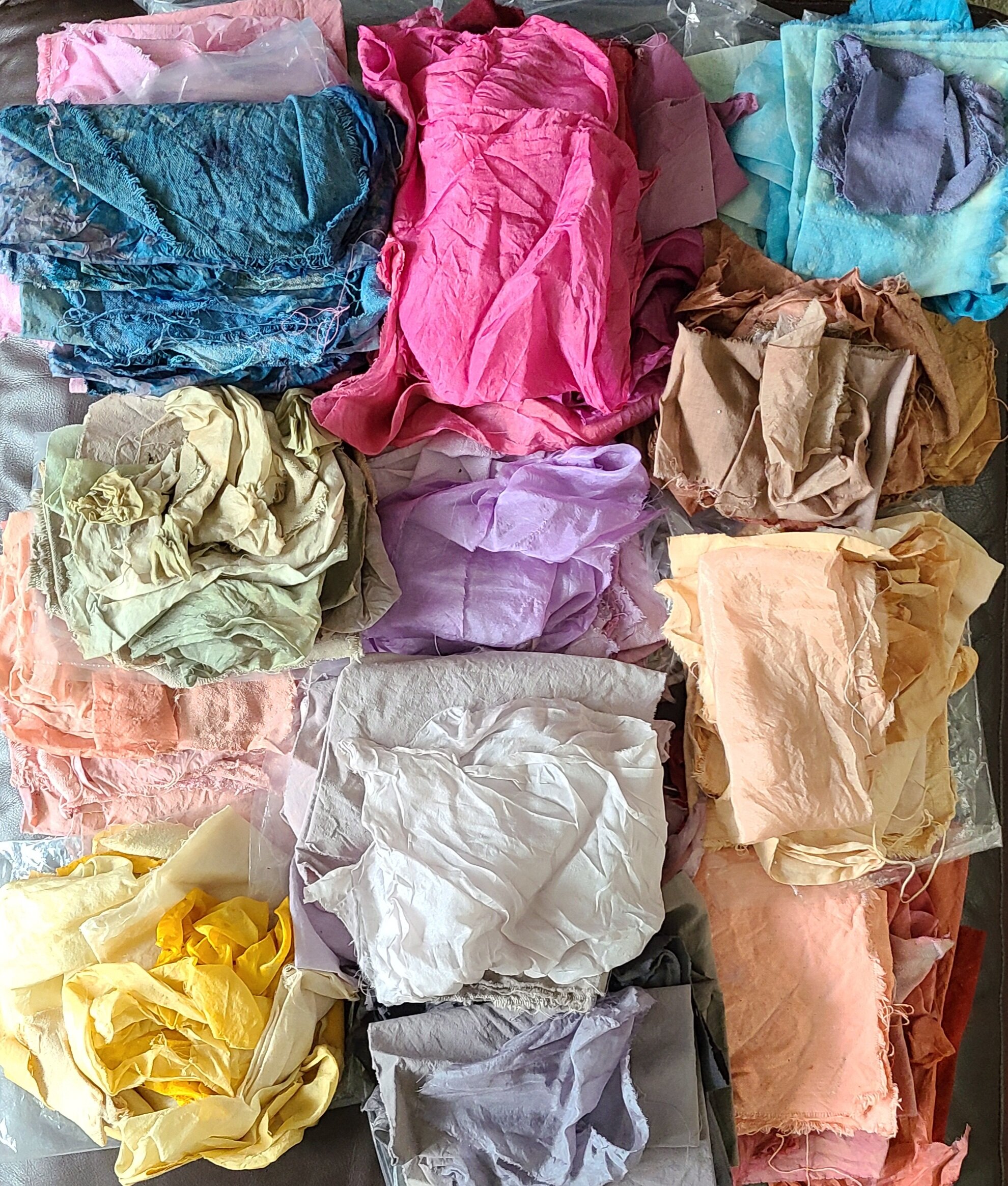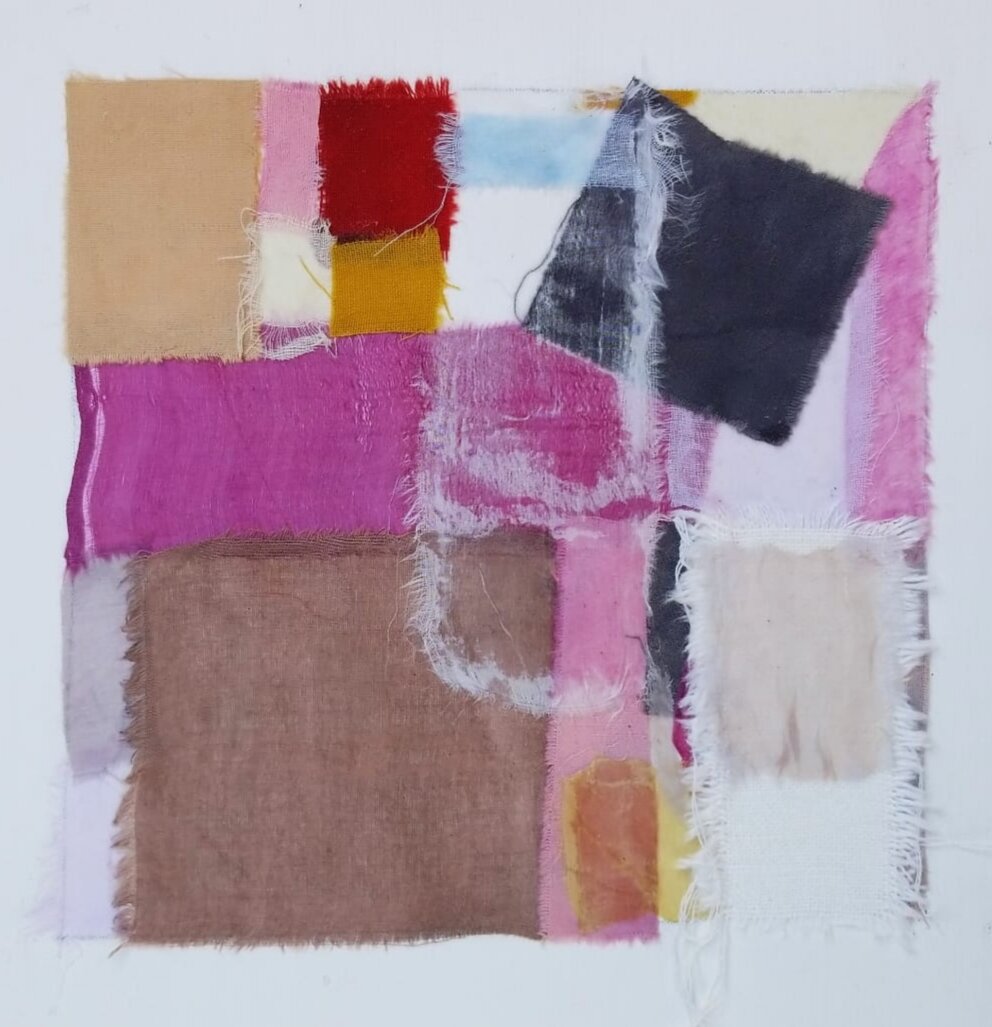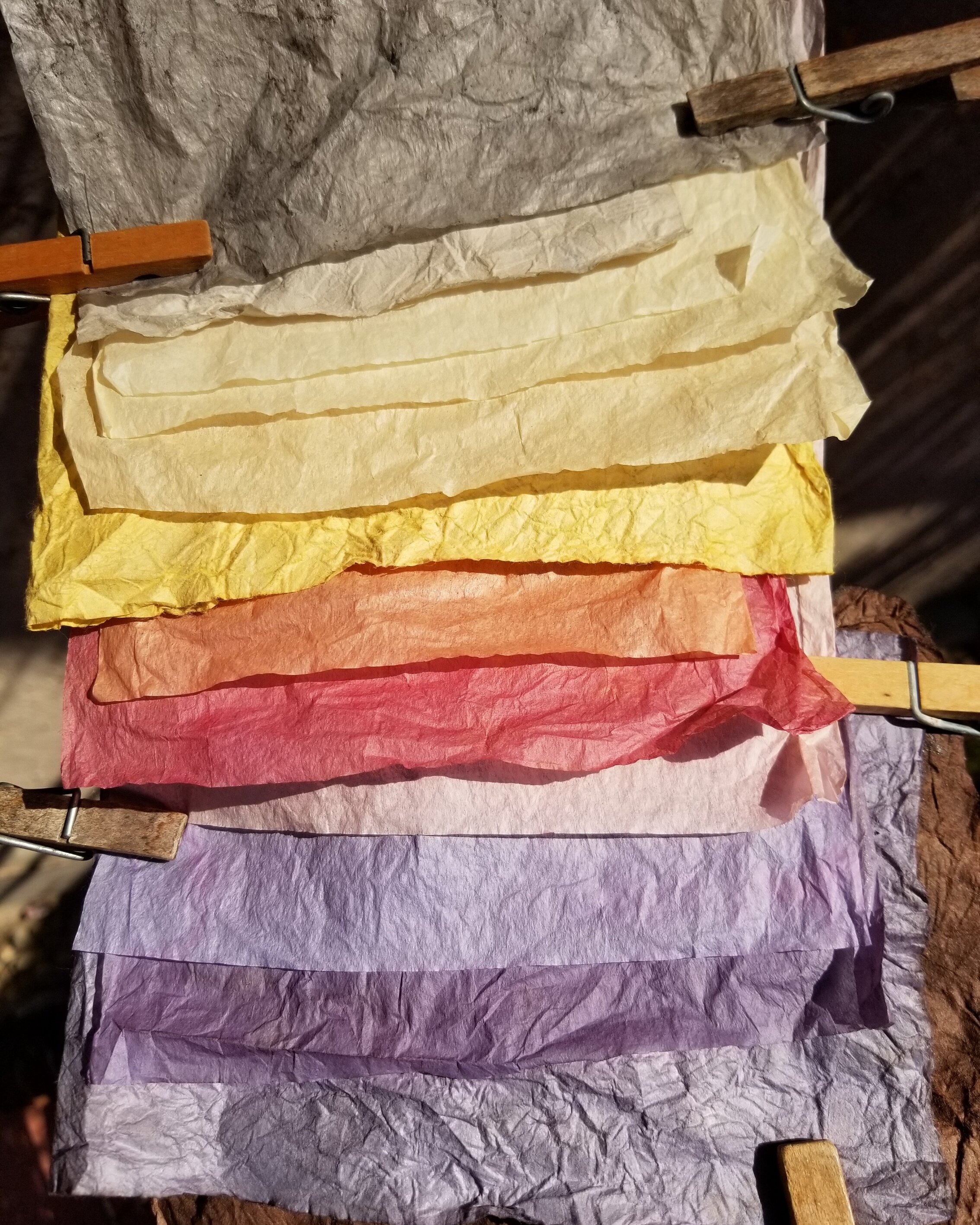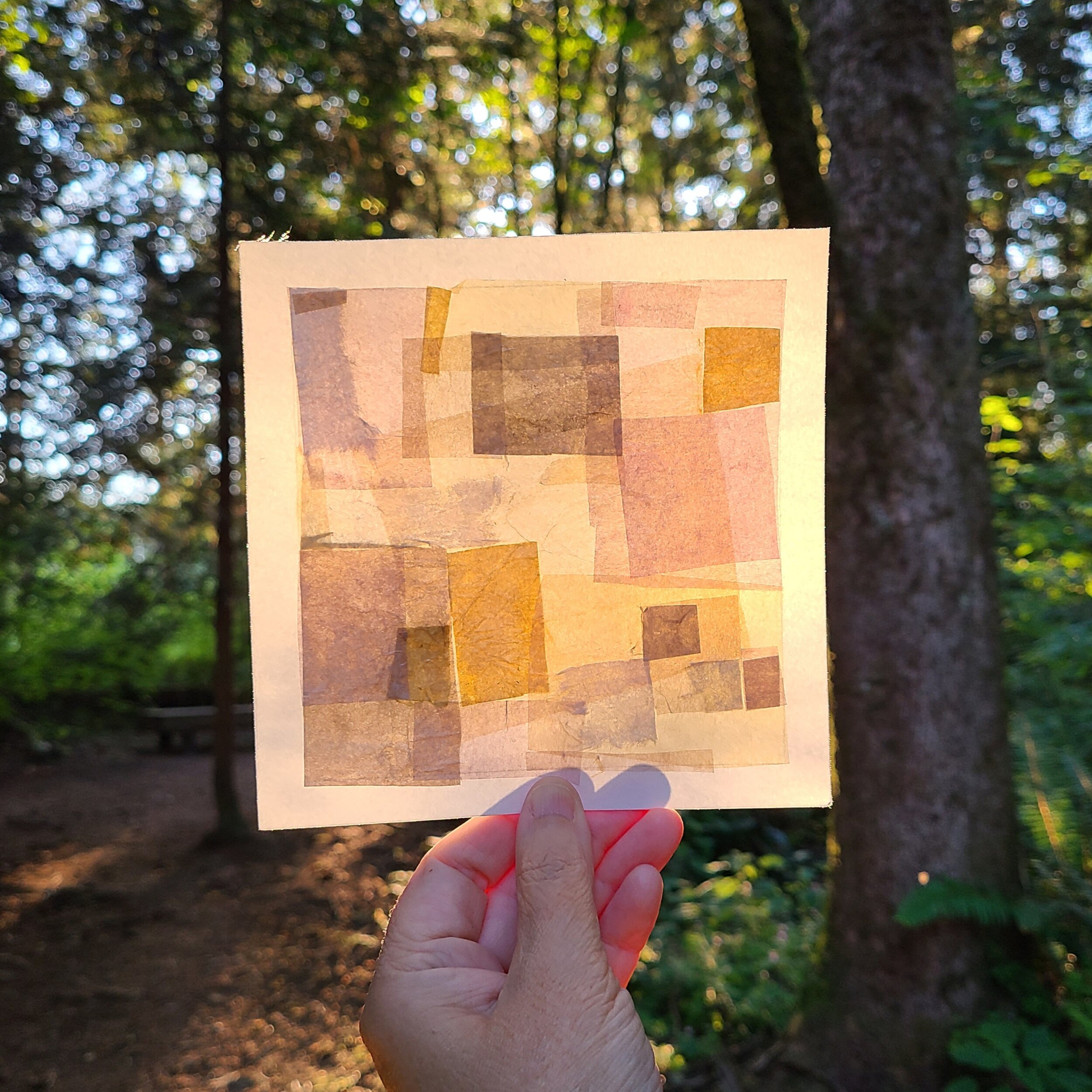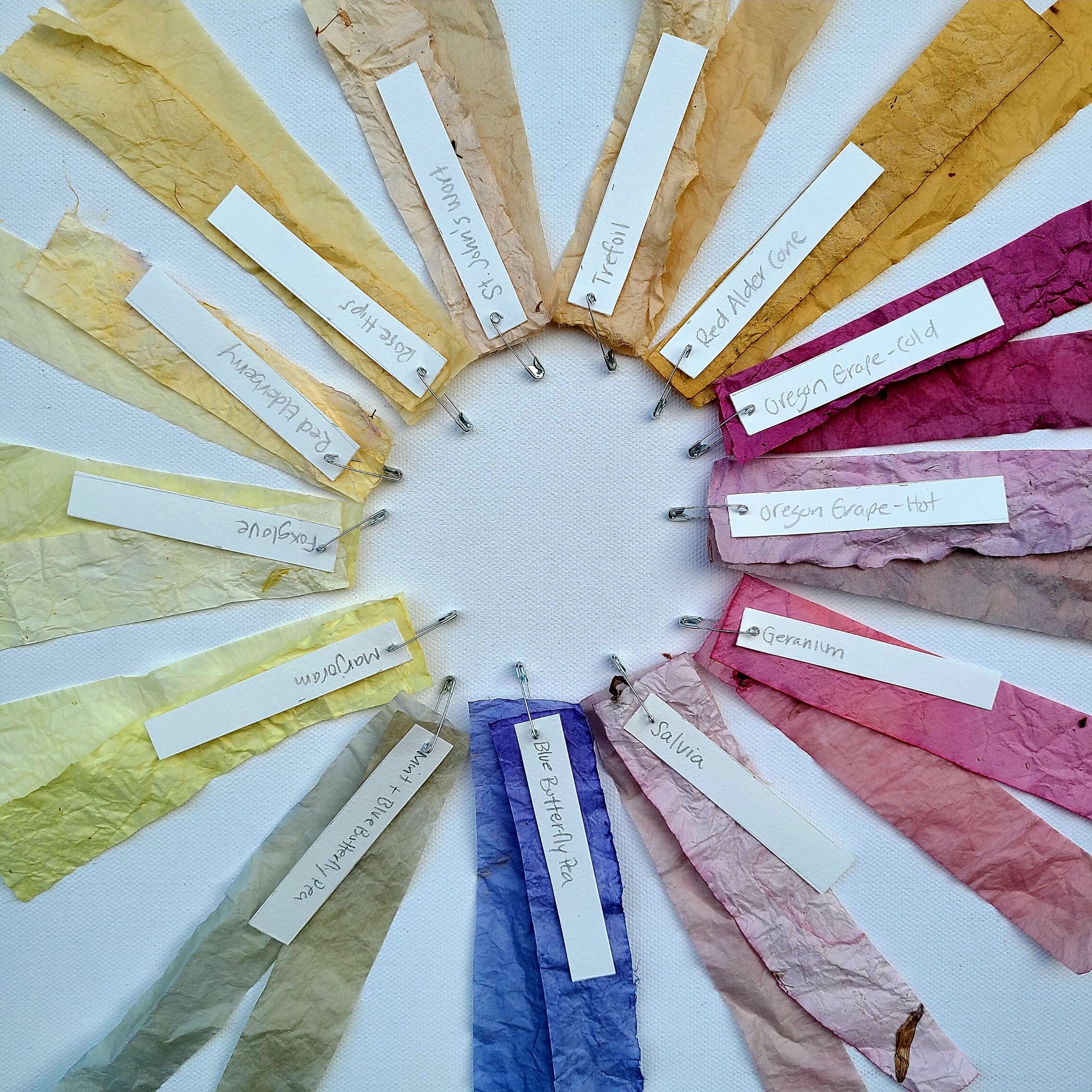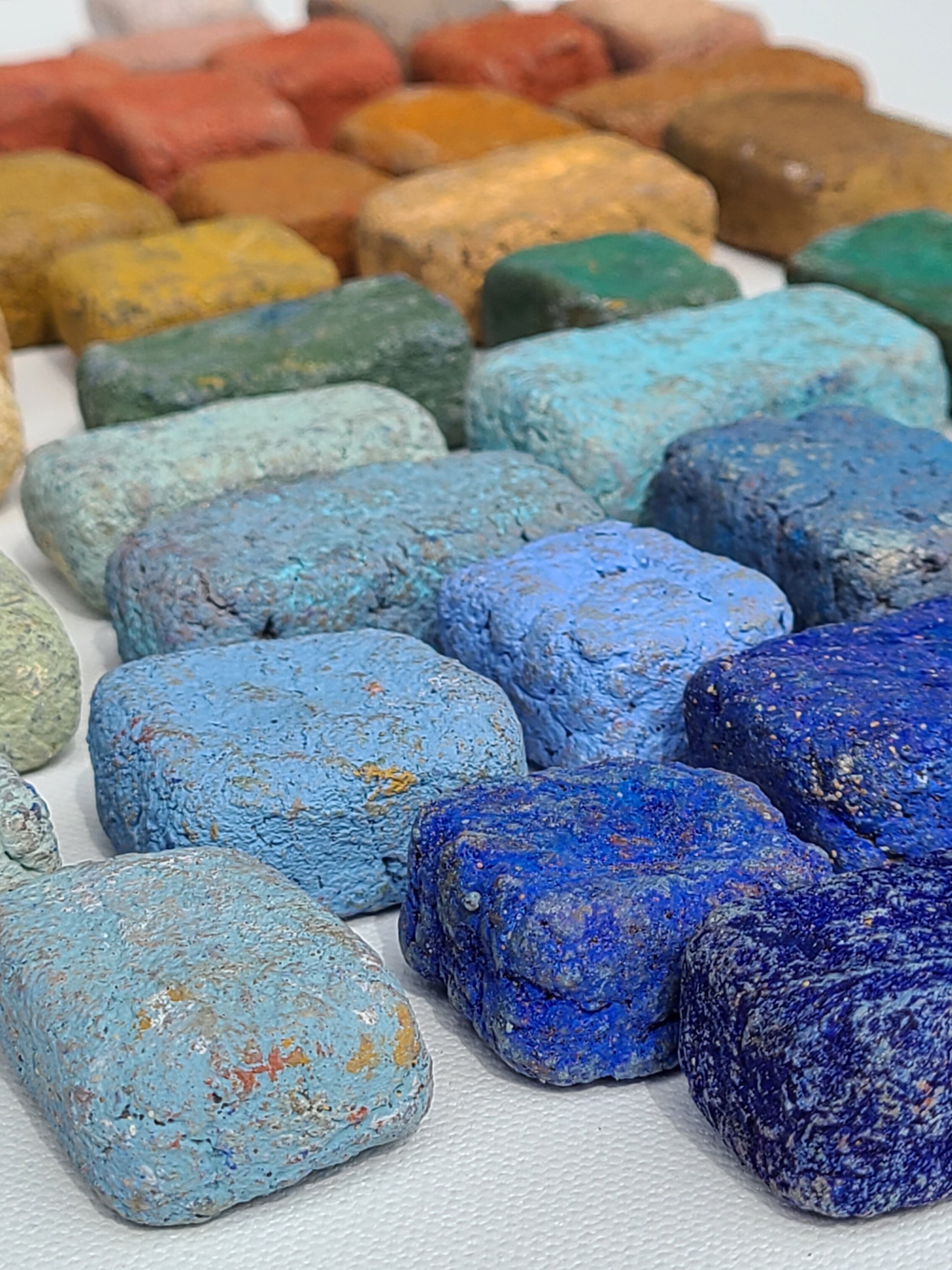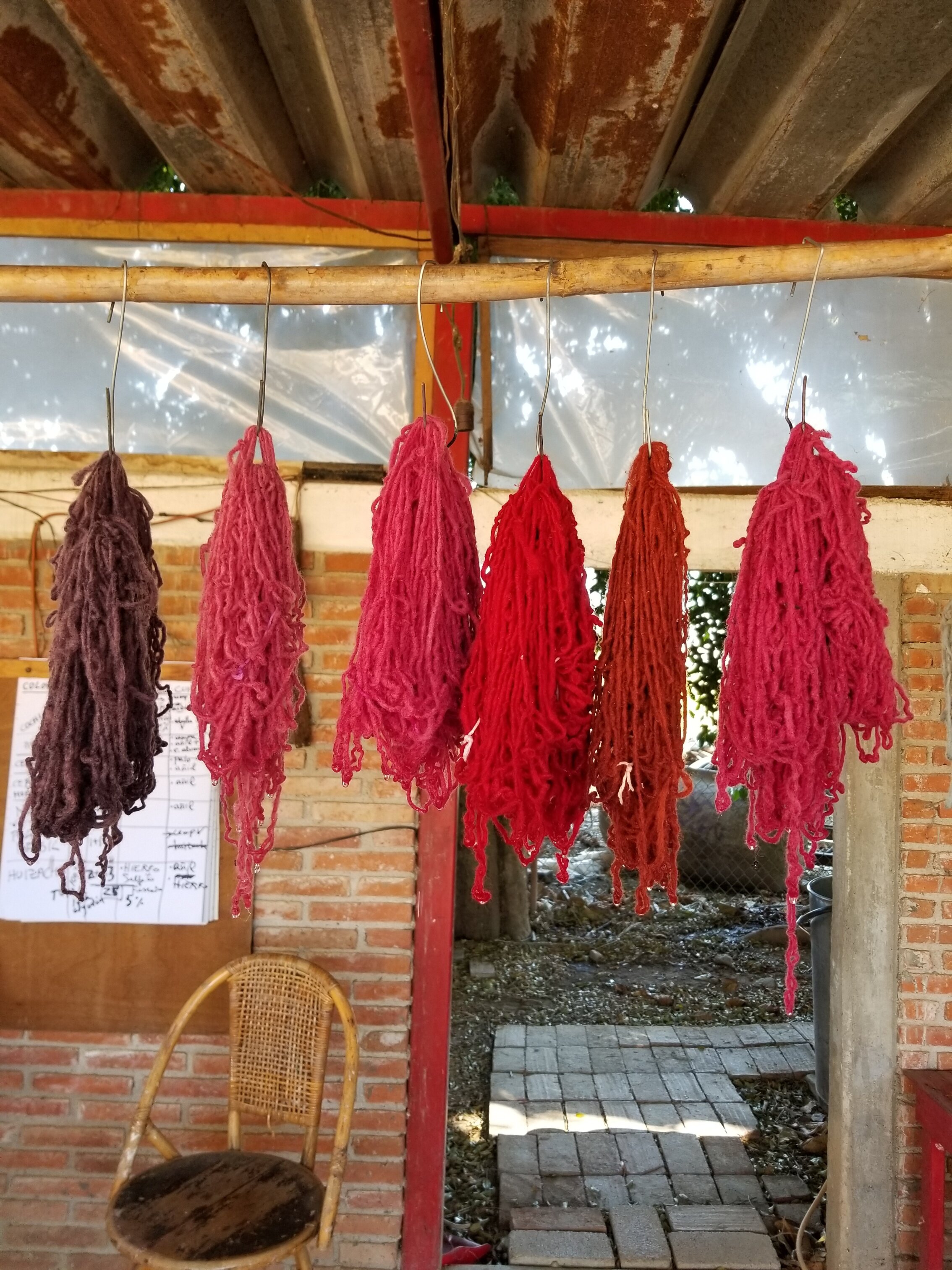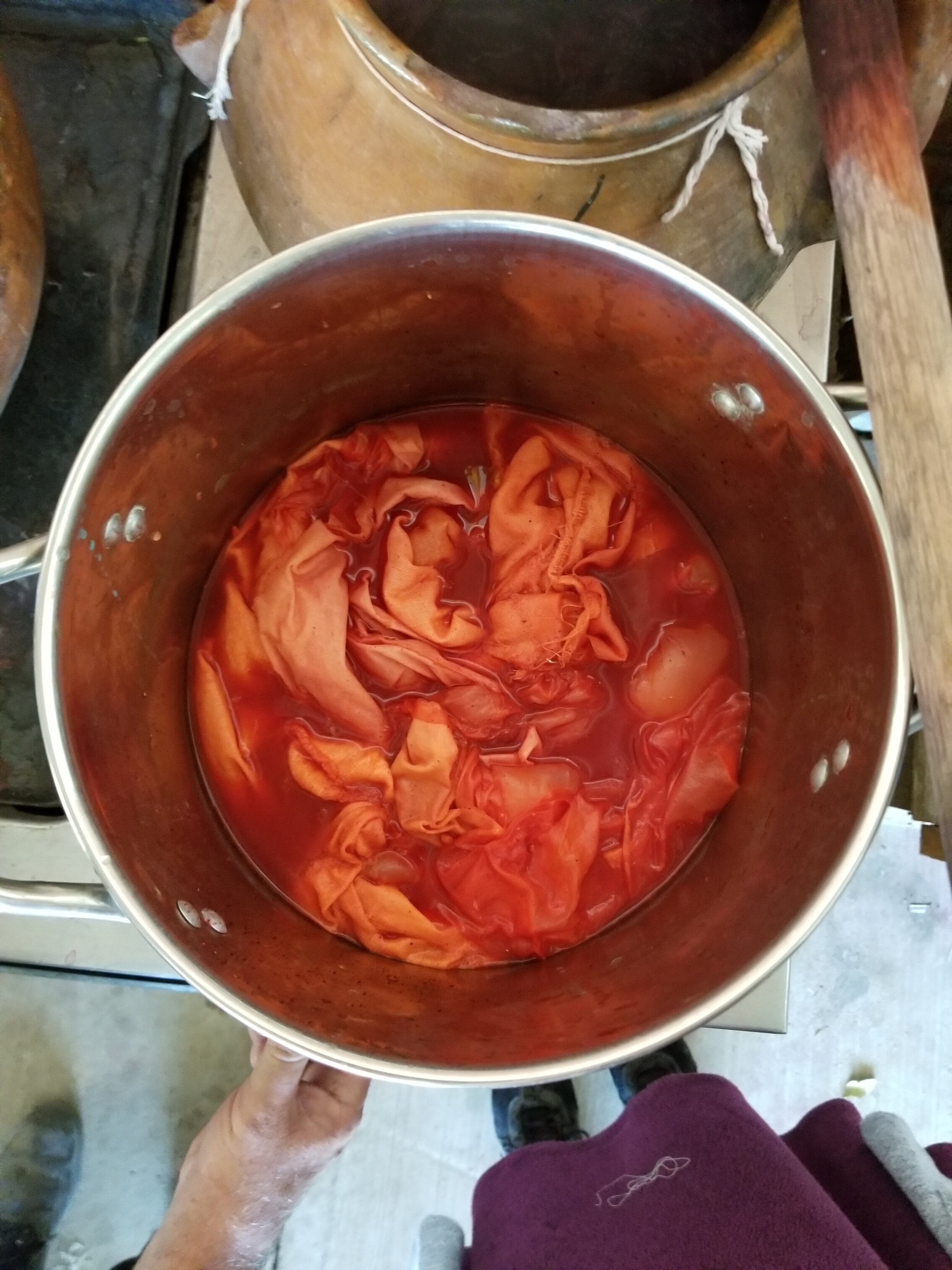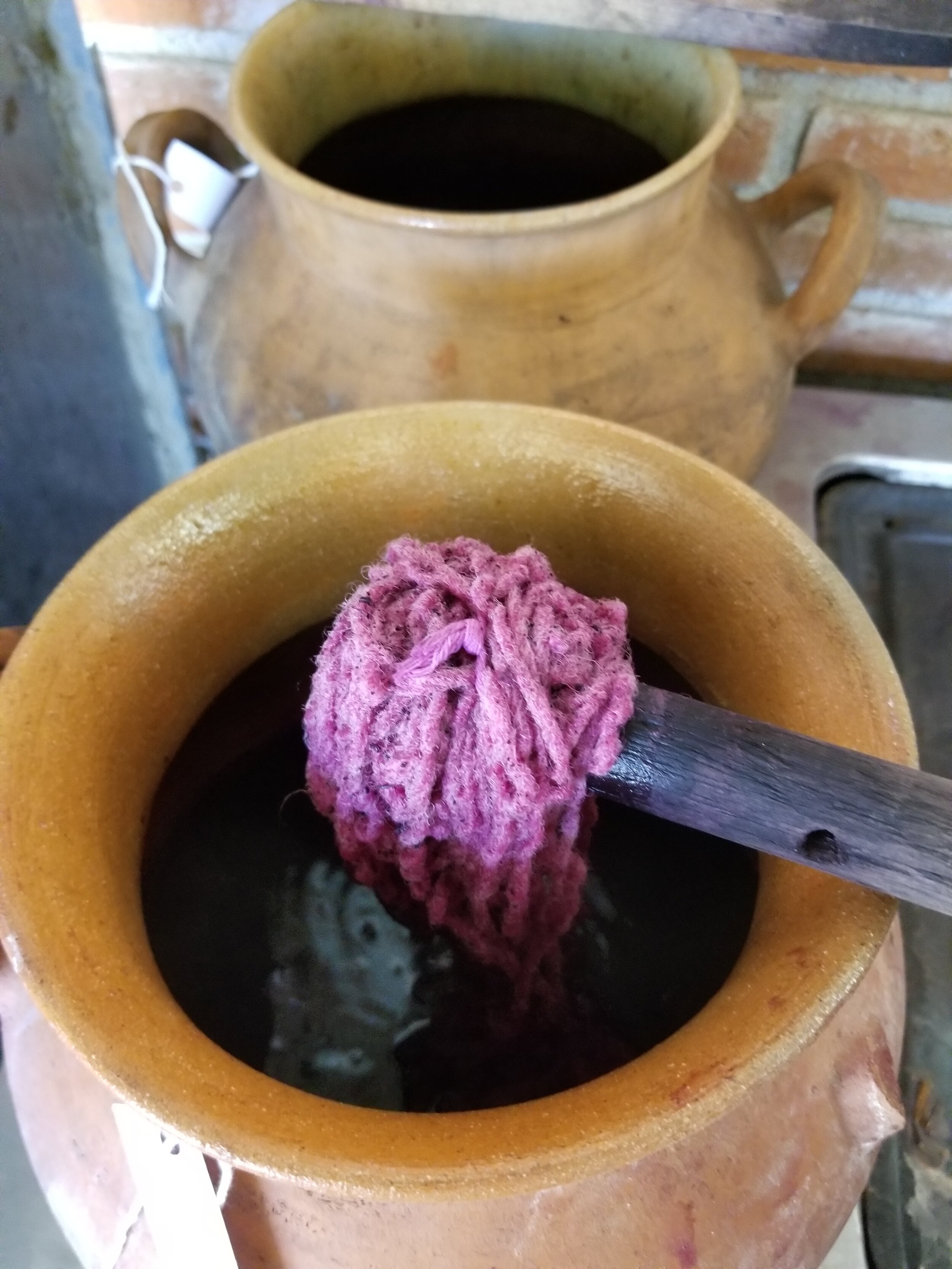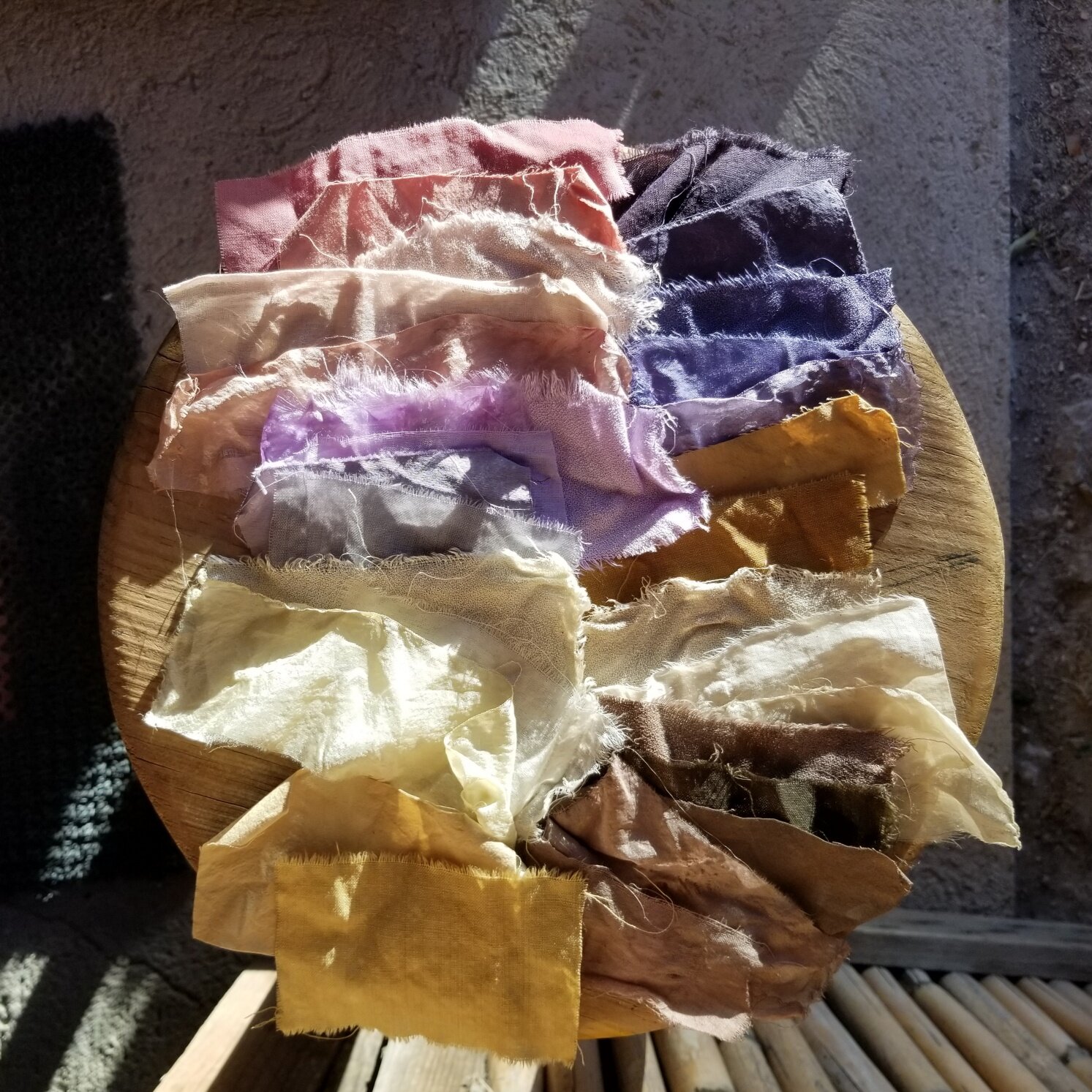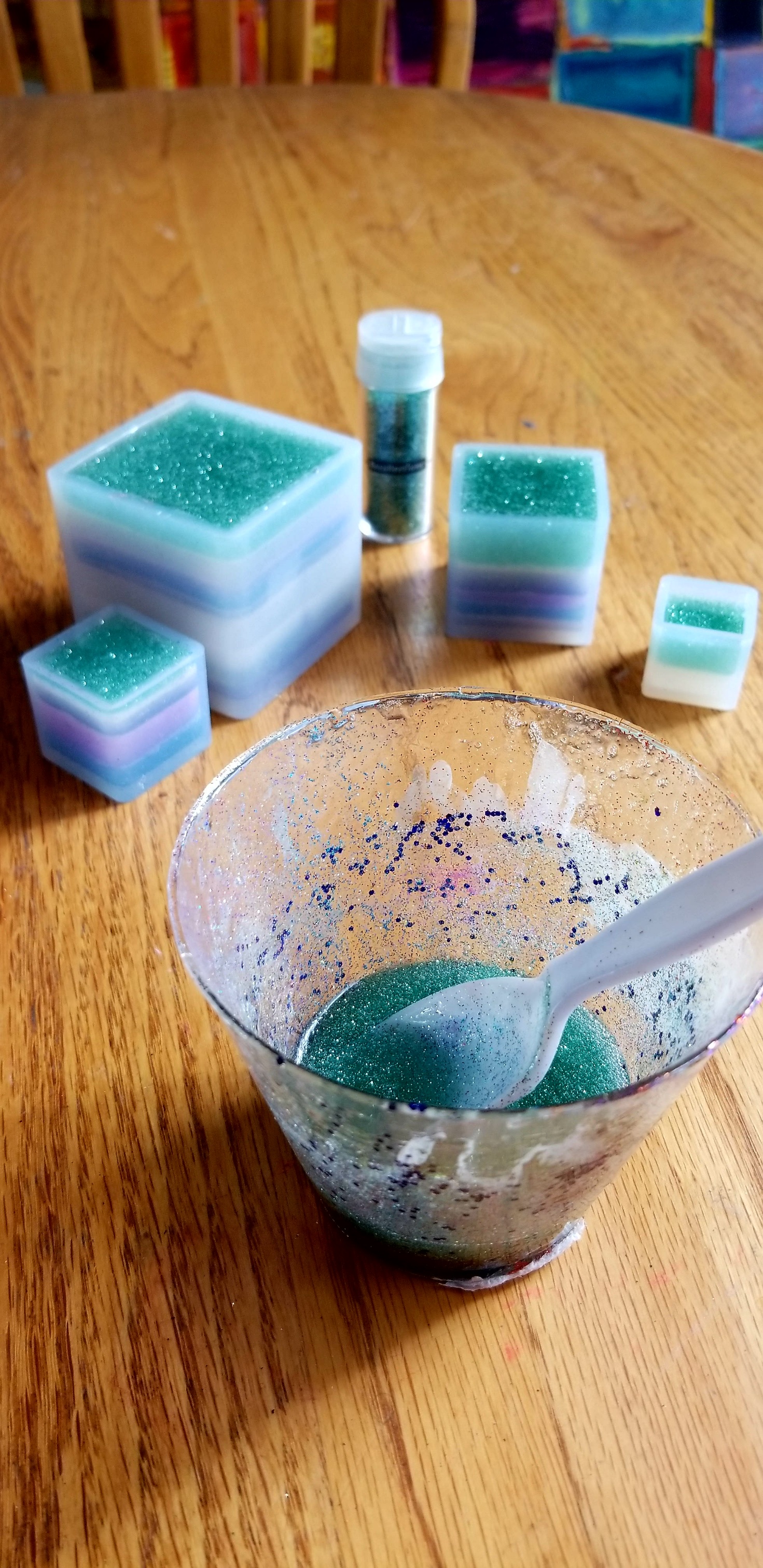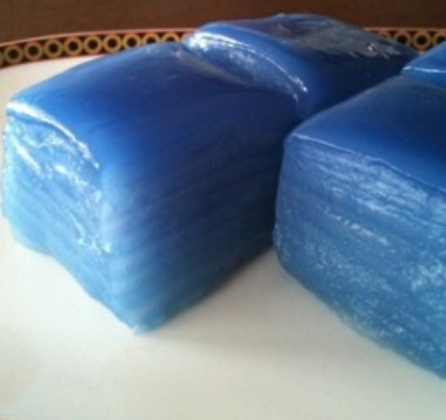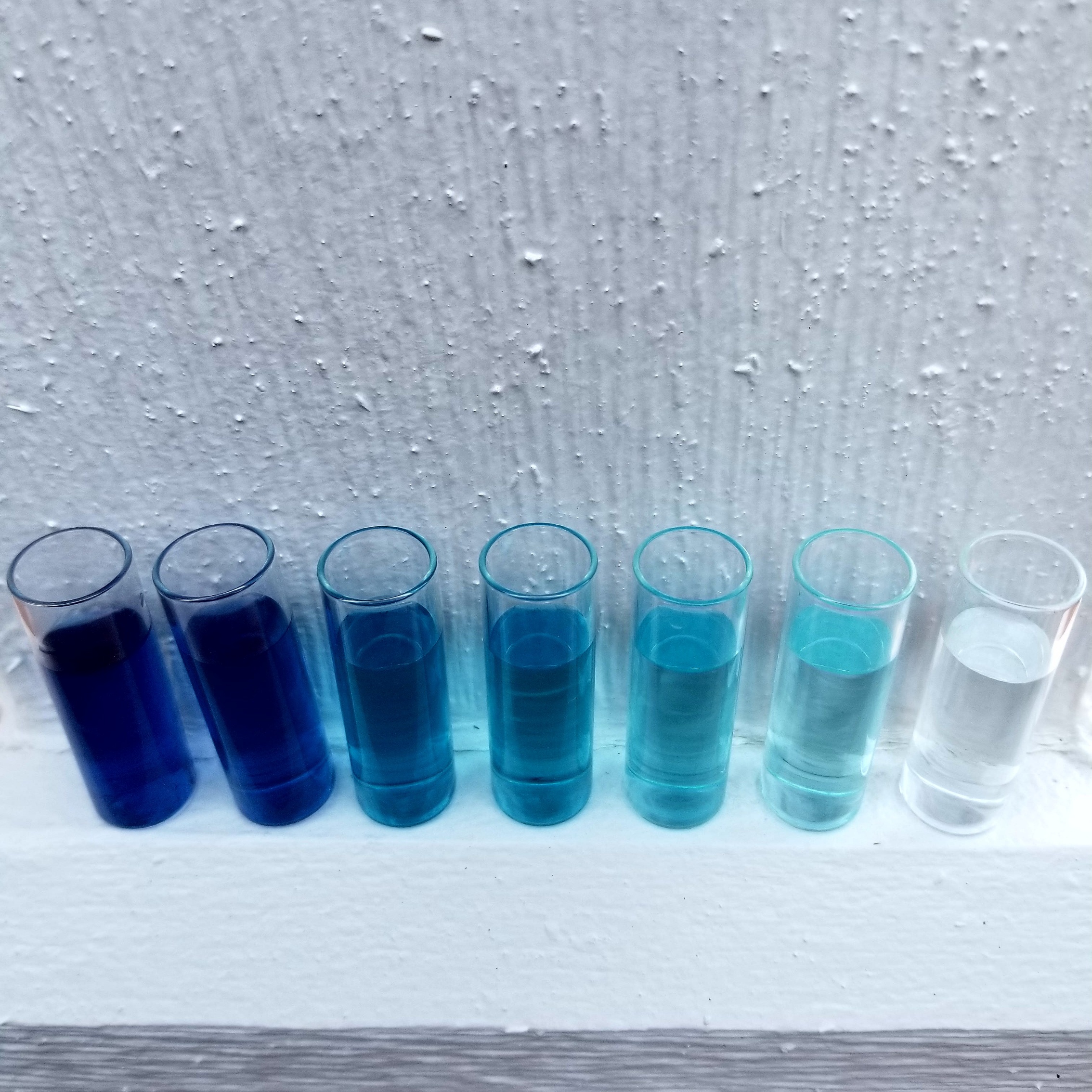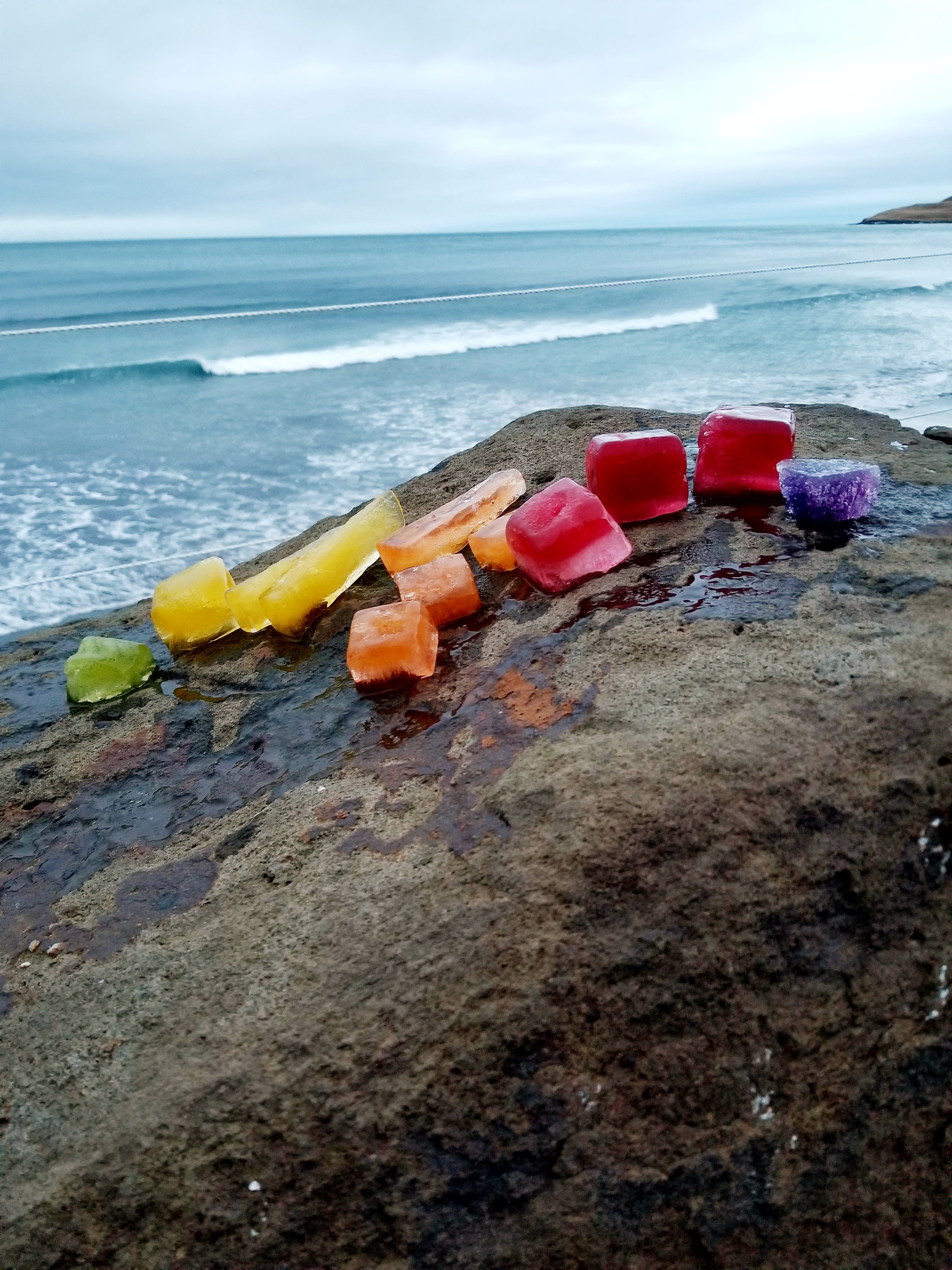Citrus peel is a natural way to create yellow dye for your textile and craft projects by using your kitchen waste. Using citrus to add zest to your cooking or for a quick snack? If so, start collecting the skins to throw in your dye pot instead of your trash bin! Any citrus will work: grapefruit, orange, mandarin, lemon, etc. This tutorial will show you how to brew dye from the peels, as well as the resulting color swatch samples (cotton & silk) with various mordants.
Yellow Onion Skin
Yellow onion skin is a natural way to create orange dye for your textile and craft projects by using your kitchen waste. Start collecting skins when you use onion in your cooking instead of throwing them away. If you don't cook with onions, no problem! The produce department in your local grocery store will happily give you their skins if you ask for them. This tutorial will show you how to brew dye from the skins, as well as the resulting color swatch samples (cotton) with various mordants.
Hibiscus
Hibiscus is a natural way to create red and pink dyes for your textile and craft projects. If you don't live in a tropical area where hibiscus grows naturally, no problem! You can use hibiscus tea or dried flowers (see links below) for a quick and easy organic color alternative. This tutorial will show you how to brew dyes from both flowers and tea, as well as the resulting color swatch samples (cotton) of both methods.
Color Quest
Welcome to my new YouTube channel, Margaret Byrd:Color Quest as I move my Trail Tales blog to a vlog! Every Friday, I release new video content focused on the amazing world of natural color. Join me as I explore ways to forage and invite organic color into my creative practice.
The Art of Craft
Small craft advisory
As an artist, I aspire to be crafty.
Forget the misguided, and tragically oppressive Western narrative of ‘high art’ as somehow ‘enlightened’ and more valuable than the exquisite beauty found across all creative expression labeled as ‘craft’.
If you can translate an idea from mind to hand, the material is immaterial – you are an artist - plain and simple.
My creative curiosity has led me down a crafty path or two, and I’m now enamored with one diversion so often associated with handiwork: natural dyeing.
Some of my kitchen favorites for natural dye: avocado, turmeric, red cabbage and black bean.
While I could fight against the notion that this diminishes the value of my art, why would I entertain such a silly thought?
Nope. I choose to celebrate, my artist friends, so let’s get crafting with natural color!
Color classics
Focusing on colors from nature in #The100DayProject has filled my fridge with an incredible rainbow of botanical dyes.
Dyes brewed from foraged plants and food scraps during #The100DayProject.
Every time I find a new plant to brew, I add to my collection. When I see a color missing, I go searching for a plant. It is a never-ending exploratory cycle.
10 dye plants foraged from Tambark Park and my garden waste to study local flora colors.
As I shared my project, and the art I created with these dyes, I could hear the buzz all around me as people became curious themselves. Certainly interested, and maybe even inspired, to learn about natural dyes.
I get this. I have a history of being intrigued myself. It’s how this passion for organic color grew and how I learned what I know so far. Ironically, it seems the more you know, the more you want to know.
Having had many of the same questions when I started my love affair with nature’s palette in 2017, I have been searching high and low for answers ever since.
When I learned from a Dutch artist that seaweed was a sustainable source of dye, I headed to Iceland to investigate.
And, because sharing is caring, I’m very excited to tell you a secret I’ve been keeping all to myself:
Starting in August 2020, I will be releasing short tutorial videos and mini-courses all about the incredible world of natural color. My intention is to build a place where you can easily find the basics to get you inspired to add color to your life naturally.
Soon to be released YouTube channel, Cookin’ Color, with short video tutorials on organic dyes, August 2020.
The topic is HUGE. There are so many options and different approaches to extracting color, plus a multitude of ways to use it.
For me, organic color has been an integral part of my installation practice, and more recently my mixed media work. But a beautiful aspect of natural color is that it is available to everyone, no matter where you consider yourself on the art/craft spectrum.
Bioplastics cooked and cured with natural dyes in my kitchen studio in June 2020.
And, the botanical dye in my fridge right now is a perfect example of the countless ways we can weave natural color into almost everything.
Nature’s bounty
Finding a way to create color in an ephemeral installation without hurting an environment is how I got hooked on natural dyes. But as my #100DaysOfNaturesColors meandered its way through botanical dyes and earth pigments, I could clearly see just how many different ways I have been exploring color from nature. Maybe one or more of these will strike a creative chord with you too!
TEXTILE
Probably the most obvious and popular use of natural dyes is to create sumptuous hues for fabric. With a growing interest of sustainability in fashion, botanical colors are popping up from head to toe. If you’ve got natural fibers in your closet (cotton, hemp, silk, wool), you can dye organically – the options are endless.
Textiles of wool, silk, cotton and bamboo hand-dyed in Oaxaca exclusively with organic matter.
My first on-line workshop will be on how to create an ombre-dyed scarf from foods in your kitchen, and this fall, I will be teaching a similar technique using earth pigments. Incorporating these rich colors into a wardrobe is a delicious way to get your art out of the house.
However, if knitting or weaving is more your speed, soaking yarn, string or ribbon in a batch of botanicals can create subtle sweetness. Just look at the wonder of this wool I dyed in Mexico.
Wood hand-dyed in organic matter including indigo, muicle, pericon and cochineal in Oaxaca, Mexico.
While I preferred to use this fiber for installation, imagine a hat, scarf, mittens or sweater with that special colorful touch?
But who says you have to wear hand-dyed textiles? My mom was an avid quilter which I’m certain has influenced my mixed media textile pieces and love of squares.
Naturally dyed textile piece, Blossom, created while on residency in Oaxaca, Mexico, March 2020.
How special it would have been to forage with my mom and organically dye fabric swatches for her to sew into her quilt creations. Keep that in mind for the quilters in your life.
PAPER
Textile’s extended fiber family is paper. The delicate translucency of paper has intrigued me for quite some time, both for sculptural and 2D applications. In Oaxaca, I first tested how wet strength fibers like mulberry and tissue would hold the colors I had brewed, and it worked like a charm.
First time hand-dyeing paper with plant matter in Oaxaca, Mexico, March 2020.
So, one chunk of 10 days during #The100DayProject, I focused on creating collage with these dyed papers. The variations of color, especially when layering, felt closely tied to the depth I love to create with overlays of silk in my textile pieces.
Hand-dyed paper collage backlit in Tambark Park, made exclusively from organic dyes foraged in Oaxaca, Mexico.
Feeling inspired, I foraged local ‘weeds’ in my beloved Tambark Park the last 10 days of the project and made a new rainbow stock of colorful paper from the PNW.
Paper samples of natural dyes brewed from foraged plants in my neighborhood. Only blue butterfly pea was from my kitchen!
What’s wonderful about paper is its versatility across several art disciplines, and a true staple in many craft projects. Why not make hand-dyed paper with plants foraged from your neighborhood the next time the scissors and glue need some exercise?
INK
Dyeing paper is one way to spread some of nature’s colors around, but making ink turns just about any organic matter into a medium for drawing and watercolor fun.
I simply poured the dyes I brewed from foraged plants in Iceland and Mexico on paper, but learning how to make ink specifically was yet another way to expand my natural color wheel during the last 100 days.
Testing inks made from avocado skin and red cabbage during #The100DayProject.
I even made blue ink with my cherished blue butterfly pea blossoms for the first time, one of the most elusive colors of nature.
Watch out - lake pigments might be just around the next corner!
KITCHEN KRAFT
While all of the above may result in time at a craft table, a stovetop is still a critical element in a studio of natural dyes. Therefore, it’s no surprise that crafts of the kitchen can also add a splash of organic color.
Much of my installation work was born in the kitchen - infused ice, mung bean and playdough have been some of my edible shining stars.
Mung bean string installation naturally dyed with kitchen scraps in Sayulita, Mexico, December 2018.
Brewing organic dyes as natural food coloring for baking, cooking and blended drinks is certainly a fun way to add color in the kitchen. At the very least, you can start with next year’s Easter eggs having that natural color vibe.
This year’s Easter Eggs were dyed au naturel in turmeric, red beet, red cabbage, avocado and blue butterfly pea.
Plus, the kitchen is the perfect place to start playing with natural dyes in general. So many fruits/veggies, spices and even food scraps can make wonderful colors with very simple recipes.
In case you missed it this spring, download a copy of my Cookin’ Color brew booklet with a few of my favorite kitchen dye recipes, or better yet, sign up here for my 5 Days of Dye short video tutorial series releasing soon in a kitchen near you!
HEADING
Go ahead – call me crafty. I don’t mind at all.
To be honest, I question why any negative association became attached to a word that honors the vision and skill it takes to create beauty with your hands. To be an accomplished craftsperson is a lofty goal for any artist, and certainly one I aim for in my daily practice.
So, let’s keep spreading the art of craft in the world today!
10x10
Natural order
I’m a big fan of squares in my art.
To be more accurate, I should probably broaden that statement to say ‘I love parallelograms’ because rectangles and rhombi pop into my artwork as well. Since a square is a kind of rectangle and rhombus, but neither a rectangle nor a rhombus is necessarily a square, I may want to be more inclusive of the linear shapes that have inspired me for decades.
All kinds of naturally dyed parallelograms playing on this canvas!
Side note: Can you tell that I’ve been tutoring my son, Mason, in geometry this spring?
So, as I sat down to write this month’s Trail Tale to share my journey into #The100DayProject, I realized I was playing with squares again. Only this time, in an algebraic way: 10x10=100, or more simply written 10².
Projection
When mixed media artist, Natalie Dadamio, suggested I try #The100DayProject this year, I thought it would be a fantastic way to deepen my commitment to my creative practice. Knowing I would be grounded from travel, at least of the air variety, diving into 100 days of a focused art ‘project’ seemed like a wonderful way to enrich the time in my home studio.
We used to have a kitchen island, but that real estate is now gone, along with the dining room table.
But why 100 days, and how would this differ from the extensive hours in the ‘off-hours’ that I’ve already heavily invested in this crazy creative biz dream of mine?
Seems the consensus is as follows on the power of 100 days of focus:
It is long enough to create a habit
It is short enough to see the finish line
It requires setting an achievable goal
It demands planning to allocate time and space
It is extremely helpful to break it up into manageable micro-steps
Coincidentally, three of my 2020 goals are hovering right now in the 100 day range. Making healthy nutrition choices, increasing movement and meditating have become daily habits. Ways of living that seemed to elude me throughout the years are wonderfully entrenched in my world today.
And, I’m at least 10x10 times happier.
All smiles on the cochineal farm in Oaxaca, Mexico, March 2020.
100 days of art….bring it on!
Hash it out
First thing first was to decide what my 100 Day Project focus would be. As you may have noticed, I suffer from a kind of creative distraction disorder. My artwork crosses all kinds of discipline and medium lines as my curiosity drags me from one to another and back again.
So, how was I to choose just one of my many passions?
Easy: #100DaysOfMultiPassion
But, in an effort to corral those multi-passions of mine into a more cohesive project, I needed a theme.
One idea came to me naturally: #100DaysOfColorsFromNature
The rainbow of mineral pigments I foraged while on residency in Oaxaca, Mexico, March 2020.
Now, with not one, but two hashtags declaring my project, there was one tiny manageable micro-step I had to take.
Breaking it all down by 10.
Chunky monkey
As I hit publish on this blog, I’m about to celebrate my 25th day – one quarter done! For those of you following my adventures on Instagram, you have had a preview of where these 100 days are meandering. For those of you on Facebook – sorry!
Breaking the project down into 10 days each of 10 different ‘topics’ surrounding natural color felt like the perfect solution to keep me on task. Plus, I argued, it would allow me to truly explore all of the ways nature’s palette has inspired my art.
Pigment color studies from the regions of Peru where we explored and foraged in June/July 2019.
If you’ve read this far, you are in for a sneak peek of the full 10x10 plan. Plus, I’ll throw in a little commentary and few more photos of chunks 1 and 2 (Days 1-20) which have already flown by:
Days 1-10: Natural dyes
I may have started using organic colors in ice, but the list of materials I have dyed from nature also include textile, paper, bioplastics and even eggs. I may have left out mung bean and dough in this project, but I added a new piece to the dye mix – ink!
Cookin’ colors in the kitchen to make inks from red cabbage, black bean, avocado skins and turmeric.
Days 11-20: Mineral pigments
Over the past 1.5 years, I widened my color scope to include the earth beneath my traveling feet. Each day, I shared some of the subtle hues I foraged from 7 unique locations: Washington, Idaho, Oregon and California on the west coast, Pennsylvania to the east and Mexico and Peru to the south.
Pigmented stones foraged along Wissahickon Creek in Philadelphia, PA, July 2019.
Days 21-30: Textile colors
I’m midstream in the 3rd chunk and creation is underway. Every day I’m building a quick color study with textile remnants I have collected from larger pieces I built in Oaxaca. The idea is to push the design from a limited natural palette in a small space.
Textile Stack Series of quick color studies during #The100DayProject. Drop me a line to purchase.
If you want a piece of the action, each one of these mixed media works on canvas is for sale at $40.
What a steal of a deal!
Now the next 7 chunks are part of the plan, but I reserve the right to make adjustments along the way:
Days 31-40: Installation – I will place 10 new naturally colored sculpture clusters within 0.5 miles of my house.
Days 41-50: Oaxaca Minis – I will build 10 new 8x8 textile works on canvas from the full Oaxaca color range.
Days 51-60: Bioplastics – I will brew up all kinds of wonder with gelatin, algae and botanical dyes.
Translucency and botanical dyes all wrapped up in bioplastics.
Days 61-70: Monoprints – I’ve wanted to explore this technique, so I plan to create 10 pieces using only natural colors.
Days 71-80: Three shape challenge - Textile
Days 81-90: Three shape challenge - Monoprint
Days 91-100: Three shape challenge: Installation
Let’s just say the last 3 chunks are meant to hold my feet to the ‘simplicity’ fire.
The same artist who enticed me to join #The100DayProject (Natalie Dadamio), also challenged me to ONLY use three shapes in my work during the 100 days. I figured 3 chunks totaling 30 days fit perfectly into the 3 shapes theme.
The 3 primary colors very cooly represented by turmeric, red beet and blue butterfly pea infused ice.
These three are for you, Natalie!
Cubism
Riding shotgun to my 100 days, Mason has found a teeny space for his geometry book on the dining table that is now smack dab in the middle of my studio, aka our kitchen.
We started solving for volume this past week. All of the 2 dimensional shapes have introduced their 3 dimensional siblings: spheres, cones, pyramids and cylinders.
And yes, the glorious square is full of pride and flaunting its cube cousin just to make me smile!
My trusty installation travel buddies: earth pigment painted paper pulp blocks. Stack ‘em up!
I sure do love cubes…naturally.
The colorful Mr. Biv
The stuff of rainbows
Don’t know about you, but I have a handful of tricks up my sleeve to remember trivial bits of information. I am the maven of mnemonics:
Need to know how many days there are in April? Got my knuckles for that.
That 5 letter Great Lake messing up your crossword puzzle? Try H.O.M.E.S. on for size.
Pulling out the crayons to draw your sweetheart a rainbow? I’d like you to meet Mr. Roy G. Biv
I think it was my grade school art teacher, Mr. Malley, who taught us how to remember the seven colors of the rainbow. (Yes, I had a full time art teacher with a dedicated art room when I was a kid!).
Mr. Biv has been a tool in my paint caddy ever since.
The organic colors of the rainbow hand-dyed on paper in my residency studio in Oaxaca, Mexico.
So, of course, Mr. Biv was my travel companion to my artist residency in Oaxaca, Mexico, last month as I continued my quest to find the rainbow in nature’s palette. Let’s just say, we found all seven of his colorful letters and then some!
Red
The color of love (among many other things) is a highly sought after hue that has a history connected to imperialism and revolution. Minerals of hematite and cinnabar, the root of madder and several parasitic creatures have been foraged and crushed so we can bathe in red.
One insect in particular has become the darling in the wide world of dye: cochineal.
I had only bumped into cochineal about a year ago when I was preparing for my residency in Iceland. Visiting a dye master in the countryside two hours north of Reykjavik, Guðrún Bjarnadóttir shared the secret sauce of her scarlet wool yarn.
The gorgeous hand-dyed Icelandic wool of Hespa Iceland. Looks like a neutral cochineal soak to me with those bright fuchsias peeking through.
She had a large jar of cochineal that she imported to Iceland as her ancestors had done before. You see, red and its variations are not natural colors found in Iceland.
Cochineal is a parasite that lives on the nopales cactus indigenous to present day Mexico and Peru.
The white powder of the cochineal insect dusting nopales cacti before harvest.
Contrary to what you may think, the red comes from carminic acid, not blood, which acts as a deterrent against predators. Or, if you are human, it seems you are wildly attracted to it!
Working for three weeks on a cochineal farm in Santa Maria Colotepec in Oaxaca, Mexico, the secrets of its beauty were slowly revealed to me.
All the lovely shades of cochineal hanging out in wool yarn on the farm near Oaxaca, Mexico.
But, not only did this tiny insect produce the most amazing carmine color, it played a starring role in many of Mr. Biv’s letters.
Orange
Beyond the measurements I wrote about in last month’s Trail Tale, dyeing incorporates some elements of chemistry.
Who remembers those little litmus strips from your high school lab? Well, turns out cochineal is sensitive to the pH level in the dye bath. Add a bunch of lemon juice, aka. acid, and mira - orange!
Shifting cochineal neutral by squeezing lemons. The secret of playing with pH!
Makes me chuckle to think that adding yellow to red actually makes orange in this corner of the dye world. Trust me, that isn’t a hard and fast rule in dye chemistry, but cochineal happily plays along.
Yellow
I know what you’re thinking: lemon juice must be a key ingredient in yellow dye. Nope. I have recently seen Sasha Duerr, a natural dye specialist, create yellow from citrus skins, but in Oaxaca, we used pericon.
You may know this native herb as Mexican tarragon or marigold, both of which are used as dye in other parts of the world. The pericon grown and harvested on the cochineal farm, however, produced a gloriously vibrant yellow that demanded visual attention.
The green leaves of pericon cooking up some instense yellow on silk strips I used for installation in Oaxaca.
Move over marigold – you may have a rival nipping at your heels, but pericon may be tough to find in my local PNW nursery.
Green
When it comes to the plant world, it’s not easy being green.
Both, Guðrún Bjarnadóttir and Manuel, my Oaxacan dye master, utilize the primary color theory to achieve green. First you dye with yellow (pericon or another yellow source), and then you over-dye with blue (indigo), another elusive color rarely found in nature. Voila - green!
Although I attempted this on the farm with my wool yarn samples, I struggled with the indigo (more on that below). That didn’t stop me from experimenting in my own dye studio on days away from the farm, and I had some success.
Who knew the cold sludge of fermenting black beans could tease out such gorgeous greens?
No over-dye step required here. Just a 2 day cold soak in fermented black beans!
I was expecting a grayish blue dye result when I bought the dried beans in the Mercado 20 de Noviembre. You just never know with natural dye - the surprise element is one of its sweetest characteristics.
Blue
If you think red is tough, you haven’t met blue yet. Treasured minerals of lapis lazuli and azurite are pigments of royalty. In the plant kingdom, indigo is queen.
The cochineal farm is an educational venue exclusively focused on the natural dyes of the region, and indigo has roots in the tropical climate of the Oaxacan coastline. Manuel grows every plant we used on the farm, but his indigo suffers in the dry heat. So, as traders have done for centuries, Manuel brings his indigo crystals from the coast.
Grinding indigo with mortar and pestle before adding it to the dye pot.
Extracting color from indigo is a labor intensive process and one that requires humility and reverence. I was quickly humbled by the mystery of blue.
Indigo
With all the work that went into making 12 dye pots to create 40 unique colors over three weeks, saving indigo for last didn’t surprise me. However, I soon realized that rushing indigo at the end did not honor its spirit, and so it did not fully share its color with me.
The many shades of indigo from an ignored dye pot hanging out with no-fuss cochineal orange.
When I explained how tough my day with indigo had been, a local artist told me the secret of the blue goddess: one must be fully present without distraction or haste.
I love this thought. It rings true across so many aspects of life, and so now indigo is yet another gentle reminder of the beauty of presence.
Violet
The last letter in Mr. Biv’s name was a dual effort in the organic realm. That sneaky, chameleon of a dye, cochineal, can be shifted to a yummy color of the violet persuasion. All the alchemist has to do is sprinkle in minerals (various recipe options) which can shift the pH balance to alter the hue.
Cochineal neutral plus 15% alum working its violet magic!
No minerals to be had – no problem: muicle to the rescue! Picking the leaves of this medicinal shrub on the farm produced a lovely violet dye as well. I doubt these leaves are sold in my local farmer’s market, so they may be a color treat solely for the Oaxacan palette.
Dye me a river
The colorful experience I was so lucky to have in Oaxaca is not soon to be forgotten. Just ask Mr. Biv.
But, that hasn’t stopped me from building my own mnemonic device to capture some of the amazing tips I learned, and a few of the easy kitchen recipes that can produce a rainbow.
Feeling inspired to get your dye on now? Click here for the Cookin’ Color Brew Booklet to see if you can catch Roy G. Biv just like I did!
xoxo - Byrdie
Beyond Measure
For good measure
One of my new favorite sayings is ‘you can’t manage what you don’t measure’. It is a gem of Peter Drucker’s thought that I’ve applied to just about everything in my life recently:
The food I’m eating, particularly the sugar (cause of most evil in the world!)
The growing number on my email list (many, many thanks to all of you!)
The distance and length of time of my daily walk (finally a habit!)
I’m sure I’ve annoyed my closest friends by spewing this wisdom a few too many times.
Funny enough, measurement is strangely absent from much of my creative practice. My tendency is to eye it, guesstimate, and just plain wing it most of the time. The result is an inexplicable delight of the unknown.
Will it work? I never know, but I trust the surprise I may stumble upon is often better than any measured steps I could have meticulously planned.
Bob Ross calls these happy accidents, and I’m perfectly content crashing into some of my most beloved creations.
Bumping into the one and only Bob Ross at the Funko headquarters in Everett, WA 2019.
Drastic measures
Having a happy accident in art school may have started this trend of semi-controlled spontaneity. It is an example I speak of often, and I believe I may have even mentioned it in a Trail Tales blog of yore. Forgive the repetition, but I suppose that is how what we learn can truly sink in.
At the University of Montana, the Ceramics Department is world-renowned, many thanks to the unique work of Rudy Autio that pushed the conventional boundaries of clay. As a BFA student, everyone is required to take Ceramics 101 at the very minimum.
One of the beautiful slices of U of M art school is that it was the most welcoming, inclusive, non-competitive and encouraging environments I have ever experienced. I count myself extraordinarily lucky as I understand this experience is not always shared among other BFA programs.
Walking in as a complete newbie, I was wowed by the amazing work being produced by the graduate students, and incredibly inspired to bumble my way through an art form that has its roots in measurement. My professor, Beth Lo, was kind and generous in sharing her knowledge of this ancient art form, and I honestly tried to follow all the steps on each project we were assigned.
Honest.
Our final project was a chance to design anything we wanted to be saggar-fired in a vessel we built ourselves. As my 3D intrigue was beginning to bubble, as well as my installation curiosity and unexplained love of all things square, I knew exactly what mixed media magic I wanted to create, and I quickly sketched the design and built a board to describe my vision.
One of my BFA thesis mixed media pieces used in an installation. This was the vision I had for my ceramics project.
When Professor Lo pulled the vessel from the fire, she warned me that I would be extremely disappointed in the result because it was nothing like what I had planned.
The center piece of the biggest mistake in my art career, 1995.
True, the 5 cube forms were not the smooth porcelain surface I was after, nor the rusty colors of the earth. They were a bubbly mess of grays and blues with ashen edges. My idea of embedding polaroid transfers into the center square was quickly washed away by residual globules of mis-measured glazes that had an unexpected combustion soirée in the kiln.
I was blown away, smiling from ear to ear, because I could never have planned such surprising beauty. At that moment, my professor told me I would be well-suited in the wild world of art.
Measure up
For the past two years, I have become passionate about extracting color from nature. Much of this was driven by a desire to use only organic matter in my installation practice, particularly when leaving a piece of art to dissipate into the earth.
Starting in my kitchen, I began brewing colors from spices and vegetables I found in my cabinets and fridge. From there, I became curious about foraging for botanicals and experimented by creating dyes from seaweed and lichen. My longstanding love of stone lead me to the world of minerals and earth pigments. Yes, I am officially addicted to the quest for a natural palette.
The colors of the rainbow courtesy of Moonstone Beach in Cambria, CA.
And, the exploration continues. Today, I am writing from my artist residency studio in Oaxaca, Mexico, a global center for textiles and botanical dyeing. My intention is to learn by doing with hands-on instruction from a dye master of the region, as opposed to my stand-by instructor known as the internet.
How will things measure up?
In short measure
As I’ve quietly entered the wide world of natural dyeing, I’ve become acutely aware that ratios, weights and recipes are quite important in assuring a desired color result. I have the utmost respect for the long history of passing precise knowledge from master to pupil. Beyond that, I am humbly grateful to have the unique opportunity to simply learn about botanical dyeing.
My master, Manuel, teaching me the Zapotec dye tradition from the Oaxacan region in Mexico, Feb 2020.
Manuel, the dye master in my residency, has shared many local practices along with some practical advice about what to avoid:
Don’t let your dye come to a boil to avoid losing the colorant to vapor
Don’t brew your textile with your botanical material to avoid splotching
Don’t let the textile touch the bottom of the dye pot to avoid color variation
Don’t stray far from the ratio of plant-to-water-to-textile to avoid weak color saturation
Don’t dry your fabric in the direct sunlight to avoid quick color fading
All of this makes perfect sense in the world of order and consistency, but as Manuel noted, none of it is a guarantee of color perfection to match your mind’s eye. It’s Mother Nature’s job to figure that out for you.
With this wisdom, I believe I’m perfectly suited for organic dyeing. The joy I experience is in the unique variation of color that nature chooses to surprise me with every single time.
First color swatches in my residency studio with textiles brought from the US and NL. Excited for the wool yarn soon to dye at the farm with Manuel!
In fact, I hope to never dye the same color twice, and splotches – bring ‘em on!
In equal measures
On my mantle, I lovingly display the biggest mistake of my BFA program, and my most cherished piece of art. These explosive cubes of clay are a constant reminder that although measurement is important, celebrating the unexpected is the spark of life.
Wonder what color surprises Oaxaca holds for me the next few weeks? Stick around for the big reveal in next month’s Trail Tales!
2D or not 2D - that is the question?
To flip is to flop
One pair of flip flops is all this artist needs. If I didn’t love the polar north so much, my toes would always be exposed in the only shoes in my closet. One pair, no choice, no problem.
Flip flops were made for installation! Placing a few colorful sticks on a dock in Union, Washington.
Asked to choose between chocolate or vanilla, the bean made of cocoa would win, even though chocolate chip ice cream would be the obvious solution. One flavor, no choice, no worries.
Canine or feline? That’s easy – woof. One pet, dirty house, ugh.
Meet Callie - resident studio dog, lover of eggs and cheese, and one giant fur ball!
Having choice is one thing, but having to choose is quite another. As much as I like to believe in the power of choice, I also recognize that I prefer fewer options, thus making the selection process quick and easy.
So, in a world where there are endless possibilities, why are we asked to pick a favorite, to choose one instead of the other?
I ask this because in the world of art specifically, I can’t choose, and quite frankly, I don’t want to. It’s the one area where I want to try everything (ok – maybe not realistic figure drawing!), and for once, the more options I have, the more my creativity can thrive.
Stack Shack in all of it’s macro glory! A rainbow of organic dye in Þingeyri, Iceland, February 2019.
2D+3D=5D. Now that is math I can get behind!
Tik Tok
Wait…there is one more area where I long for a ‘sky’s the limit’ kind of choice: Travel!
No surprises there. When Chris asked where he could take me for my 50th birthday, the list of options, places high on my bucket list, was lengthy. In the end, the choice, Lofoten, Norway, wasn’t difficult because I still have so many amazing landscapes to discover. There is time and it will never be too late.
Chris and yours truly leaning into the wind on our way to Lofoten, October 2018.
And these words perfectly describe how I feel about my creative journey. Yes, it appears my passion has led me to installation, filled with all kinds of delicious sculptural material to build, but the photographer in my DNA is itching to compose a still life of my creations. Not sure what the painter in me thinks about all this craziness, but she’s okay to fling some color around in the meantime. There is time.
Resident artist
Even with the wanderlust and countless corners of the globe to explore, I seem to choose Iceland again and again, just like those worn out Havaianas. This time (February 2019 to be exact), however, I decided to return to that enchanting island near the Arctic Circle to explore my love of the fifth dimension.
Shot Glass installation on the beach of Þingeyri, Westfjords, Iceland, February 2019.
For my first artist residency, I proposed to dive deep into extracting organic dye from the land and sea of Þingeyri, Iceland in the Westfjords. With these colors from nature, I would experiment across mediums, and one might even accuse me of stepping into the craft side of the arts’ universe: Dyeing fabrics, installing the frozen liquid across the village and pouring it on paper to see how seaweed, lichen, cabbage and kale would soak into washi. Is she a cook or a seamstress? A forager or a printmaker? What is this artist crafting now?!?
My warehouse studio at the Westfjords Residency. Cold, but oh so spacious!
Passion…
Palette perfection
Ten days in a remote fjord in the middle of winter was the perfect setting for limited choices. It was exactly the wildly windy silence I sought to focus exclusively on creative expansion. Choosing only four organic substances for extraction also felt comfortably restricted. My reward in the sparseness was a beautifully abundant color palette only Mother Nature could create.
Seaweed, lichen, cabbage and kale - oh my! Organic dye in all it’s natural wonder.
From simplicity came the complexity I seek in my art practice, a choice I may never have made on my own.
Any doubt lingering in my mind about a need to choose just one discipline continues to dissipate. What my Icelandic residency gave me was not only a deeper understanding of organic dye, but a sharpened curiosity of how I might use it’s subtle beauty across varied platforms. Iceland also gave me some amazing artwork!
Building a body of mixed media work from the Iceland series. Organically dyed fabric on canvas, 12x12 inches.
Letting it slide
One pair of snow boots is all it takes to keep this artist’s toes toasty in the Arctic chill. Four times over eight years, no change, all good.
One pair of boots and a bucket of ice. What more does an artist need?
In February, I also brought a pair of slides to Iceland, my winter version of flip flops. As we made our quick exit to beat the blizzard winds threatening to strand us another day in the Westfjords, I accidentally left my slides behind.
Note to self: I only need one pair of shoes wherever this journey takes me.
Kisses - Byrdie
The square root of pie
Creative Blocks
A bat, a moth and a butterfly flit into a bar…
Might seem like a strange visual, but these are the most common images (sans bar!) that people see when they examine the first of Rorschach’s ink blots. Known as Klecks at University, the Swiss artist-turned-psychiatrist developed his love of Klecksography into one of the most widely known psychoanalytical evaluations of our time.
Two Peas, 2018, my first attempt at painting with the organic blue dye of butterfly pea blossoms.
So, here is my question: what is the fascination of finding the reality in abstract art?
As humans, we have an inherent need to understand what we see and connect it to the world around us. The figure, the landscape, the dogs playing poker - we get that and it makes sense. It's exactly why puffy cumulus clouds have a tendency to channel Mickey Mouse.
Seems Mickey Mouse was absent this day. What do you see?
But, when someone says your work reminds her of dried fish swim bladder, what does that say about you, or more importantly, your art?
Mawther Nature's candy
Building and installing abaca sculpture, a fiber made from a native Philippine plant in the banana tree family, has garnered lots of ink blot banter. The swirls have been lovingly compared to Dr. Suess’ fantasy world, Chihuly’s glass work and unicorn horns.
Abaca swirls installed on Black Butte Ranch in Oregon, August 2018.
However, when Cherry, my Thai sister-in-law, feverishly helped me slather adhesive on the abaca to prepare for a festival installation this month, she saw fish maw.
How does a fish float and sink in water? Swim bladder of course!
And you know what? I get it.
Not because the dried seafood delicacy Cherry was forced to eat as a child actually does resemble my abaca swirls. Nope. It’s because, for some reason, the number one recurring connection people make to my artwork is food.
Fish out of water
Merging my love of global travel with art installation, I never imagined I would learn about the foods of distant lands by sticking art in the ground.
Hibiscus infused ice installed on quicksand in Seabrook, Washington, July 2018. Beach ice pops!
Although my sculptures have seen international waters, none of these tasty treats have influenced my work. In fact, some of these morsels and their homelands I’ve never even experienced.
Let’s make a shopping list:
- Borrachitos – the little drunk filled with sweet jelly
- Lokum - the Turkish delight meant for royalty
- Khanom Chan - the nine layer dessert of Thai prosperity
Who says you can’t have dessert first?
Punch Drunk Love
I love everything about Mexican food, but I must admit, I’m not one for the sweets of this scrumptious country. While on Desha Peacock's Sweet Spot Style creative retreat in San Miguel de Allende in January this year, an artist friend, Melissa Partridge surprised me with a gift of borrachitos.
Not a shabby place to create some adhesive domes while on retreat in Mexico. Don't eat the art!
Melissa was not appealing to my sweet tooth. She saw the crystallized jelly cubes and immediately thought of the resin work I was installing in San Miguel.
You might get a little drunk munching on these sweeties in Mexico.
These sugary squares were originally created by nuns to give to their patrons in appreciation for support. Eventually, the sisters found their entrepreneurial spirit and began selling the delicacy to the public.
Glitter infused resin cubes stacked and good enough to eat in San Miguel de Allende, Mexico, January 2018.
Love it! Artisans realizing the value of their work – something we all need to embrace!
The turkey trot
Unlike damar resin, an organic substance drained from trees in East Asia, the resin in my current work is 100% man-made polymer. Nothing you want to gobble down with a tall glass of milk. I would venture to guess eating tape, paper and glue would also not sit well on an empty stomach.
Don't pop this cube in your mouth please!
Not so apparently. The Pop Cubes I’ve created have recently been compared to the wildly sweet Turkish Delight of the spice markets in Istanbul.
Lokum love to share with family and friends.
Although I would not recommend munching on my adhesive treats, the process of making lokum reminds me of the delicate nature of working with resin. The ingredients are simple, but you have to make sure you follow the directions and have everything at your fingertips before you start cooking.
As you can see, I follow the directions perfectly, including the precise measurements and appropriate equipment for handling resin polymer.
Thai spice drops
The kitchen is the heart of the home. It is where we create food to nurture ourselves, body and beyond. We gather around the table to connect, celebrate and commune. Therefore, having my resin cubes compared to khanom chan in Thailand is an honor, and apparently quite lucky.
Glitter infused resin cube at Pacific Beach in Seabrook, Washington, April 2018.
Butterfly pea jelly dessert Thai style.
Making the jump from my sculptures to fodder was not an obvious leap for me. However, if I reflect on the past year of installation, much of my work incorporates organic material and requires the kitchen as my studio.
I mean, isn't the artist's apron borrowed from a chef?
Dough nuts
Organic dyes first entered my practice when I built frozen pieces to install in Iceland. I spent weeks in the kitchen researching dyes derived from plants. Even the elusive blue was found in a magical tea brewed from the blossoms of the butterfly pea.
Nothing more beautiful than a gradient study of blue thanks to butterfly pea blossoms.
Planning my installation trip to Maui in June, the stove-top became my drafting table once again. In a stretch to move from cubes to a spherical form, I opted for an easy solution – dough. Funny enough, it was actually edible art!
Organic dough is more salty than sweet - beware.
Placing organic dough on the beaches of Hawaii elicited a kid-in-a-candy-store list from spectators:
- Skittles
- Pop Rocks
- Nerds
- Sprinkles
- Fruity Pebbles
- Easter eggs
- Potatoes (ok – this one isn’t very sugary, but sweet in thought)
A little sand never hurt. Organic dough on Hamoa Beach, Maui, June 2018.
Connecting my art to the confections of Mexico, Turkey and Thailand fits my Bohemian soul. That said, I love that my organic work has crossed into the mass-media influenced candy industry of the United States.
Andy Warhol was definitely on to something.
Pop psychology
I’d like to think that Rorschach would be proud to know he had reached cultural iconic fame with his ink blot artwork. Being immortalized by Andy Warhol in the art world is no small honor.
Rorschach by Andy Warhol, 1984.
Interestingly, the ink blot was eventually used to test for creative thinking.
When I look, I don’t see a butterfly or a delicious dessert. My ink blot always looks like an island I need to visit one day.
So, tell me, Artist, what do you see in your life's ink blot? I promise not to analyze anything you might say in the comments below...
Barefoot in a Sneaker Wave
Better get your trench coat
From 16,000 feet deep in an under-water ravine to the crest of an 8-story thundering wave, the coast of Nazaré, Portugal has a magnetic pull. In the churning Atlantic water of Praia do Norte, hard-core surfers, and spectators alike, plunge into the wild world of big wave surfing. In fact, in November 2017, Brazilian surfer, Rodrigo Koxa, broke the world’s record by flawlessly riding this massive 80 foot wave, honoring a life-long passion.
First and last time on a surfboard in 8 inch surf at Praia do Madeiro, Brazil, 2010.
Northern exposure
Later that same month, 25 degrees north of this famous breaker, lying face down on a rocky beach along the Strandir coastline, I encountered my own booming breaker. Fingers numb in the gusting wind, I howled, “never turn your back on the ocean” - a saying my kids have heard me utter many times. Placing my second ice installation within feet of crashing waves, my travel mate, Chris, kept eye for any monster swell that could sweep us away.
Dried leaves embedded in ice installed on the Strandir coast in the Westfjords, Iceland. The tiny black thread near the top left side of the ice is my glove, sticking relentlessly to the frozen piece. Thus, bare hands were required to install!
In absolutely no way were we facing the danger of Nazaré, but chasing my creative dream pulls me back to the ocean time and time again. What power do these wild waves have over my journey, and how do I make sure I’m not turning my back on the surf in front of me?
Facing the churning sea in Djúpalónssandur, Iceland to install blue pea infused ice.
The Big Kahuna
Duke Kahanamoku, the father of modern surfing, is credited with coining the famous phrase that keeps us facing seaward. Both practical and philosophical, this saying teaches us two important life lessons about the power of the ocean:
1. There are significant physical dangers of being hit by a wave.
2. Mankind needs to show deep respect for the sea.
Humbly, I’d like to offer one additional lesson to be learned:
3. The wave coming could be the ride of your life!
Rising temperatures and rising tide at Kirkjufell, Iceland means melting ice...fast!
v = f x λ
Waves as a metaphor for artistic creativity is perfectly suited. Many of us have had times brimming with unbridled imagination and surging productivity. For each crest, however, there is a trough, a quiet time…the lull. Without one, we can’t have the other, so I’ve gingerly embraced both, experiencing the drought before the flood.
Silk thread orb installed at the driest place on Maui: Haleakala Crater.
Roll with it
Today, facing an expressive tsunami, however, I am feverishly grabbing at each medium that pokes out of the rushing water. Ice, resin, paper, fiber, adhesive, wax, paint and canvas are all bobbing about my studio. While I could be drowning, each one plays an integral part in this wild ride, one supporting the other in ways I can’t begin to understand. But, that is okay – I trust the process.
Glitter infused adhesive domes melting in the Hawaiian heat.
I have to - these are my life-saving floaties.
Making waves
So, if today's story is about ‘The Big One’, let’s dive more deeply into some of the ways we choose to describe a tidal wave, creative or otherwise:
Abaca installation turned upside-down in San Antonio, Texas.
- Killer Wave: Yet another negative description, but how many times have you used it to describe something extraordinary? If you get out there, showing up every day, I guarantee you will be killing it.
- Rogue Wave: When creativity hits, I urge you to ‘go rogue’ in the full Urban Dictionary sense. Don’t follow the rules. Let your heart lead and do what feeds your soul.
Nobody gave me permission to do this installation. The only formal invitation I received was from Mother Nature.
- Freak Wave: So, Rogue, go listen to the lyrics of ‘Come from the Heart’ and dance like nobody is watching! As one of my favorite contemporary artists, Nicholas Wilton, would coach: create art in exactly the same way. Flying your freak flag is what makes your art uniquely yours.
- Extreme Wave: Not for the faint at heart, when creativity comes calling, push yourself as far as you can, all the way to the edges of your comfort zone. I promise, you won’t fall off. That’s where the good stuff hides.
Blue pea and red cabbage infused ice installed near the outer edge of Ögur, Iceland.
I met a Cyclops in Ghost Trees
If the names for waves weren't scary enough, what about swells being creatively called Jaws, Dungeons and Mavericks? What do these mega-wave meccas have in common with Praia do Norte, or the crazy 'artist' who chooses to play in the 'surf'? At these beaches, to ride the Big One, tow-in surfing is not a luxury, but a technological necessity.
Yes, it means having a partner in crime, someone who understands the fierce power of the ocean and pull of passion, and is there to help propel you safely through the choppy waters.
Guess we should add one more life lesson to The Big Kahuna list above:
4. Never swim alone.
Chris, partner in crime, soaking seaside after a long day of ice installation in Drangsnes, Iceland.
On the very same island as Jaws, Chris stood watch with the surf pounding against the lava field at La Perouse Bay while I swiftly placed the last of my Maui installations. Mouthing the words that have become my mantra, my partner in crime faced the waves by my side, keeping me safe while I dove in.
Feeling the ocean spray in my face while installing organically dyed dough at La Perouse Bay in Maui.
Passion Fish
My sleep is often filled with dreams of crystal clear tidal surges that I manage to negotiate perfectly with a surfer’s ease. The trick I've learned is this:
Dive straight into the face of the wave before the crest crashes. Passion is on the other side.
Tell me, what do you dream about? Jump into the comments below - the water is perfect!
